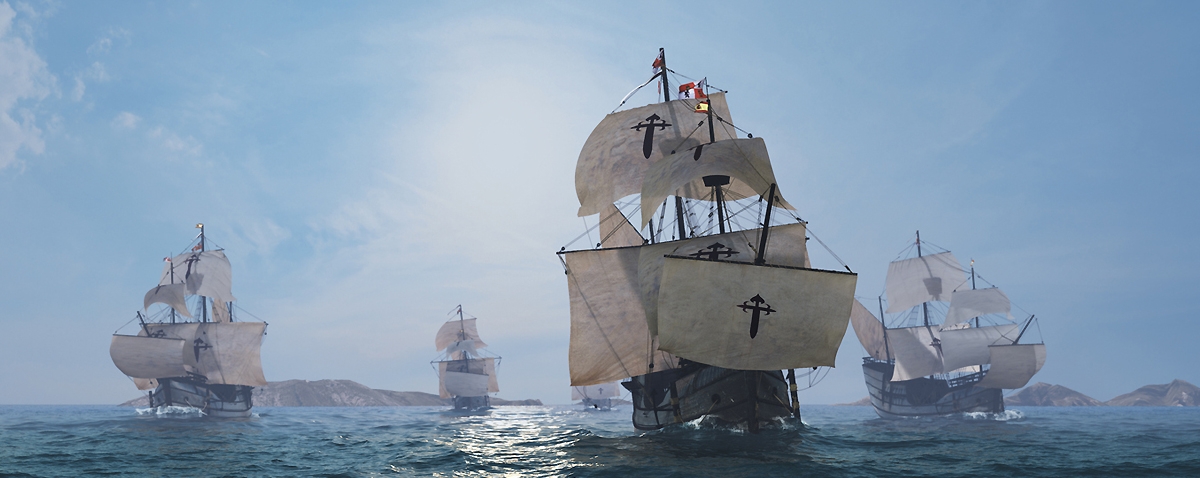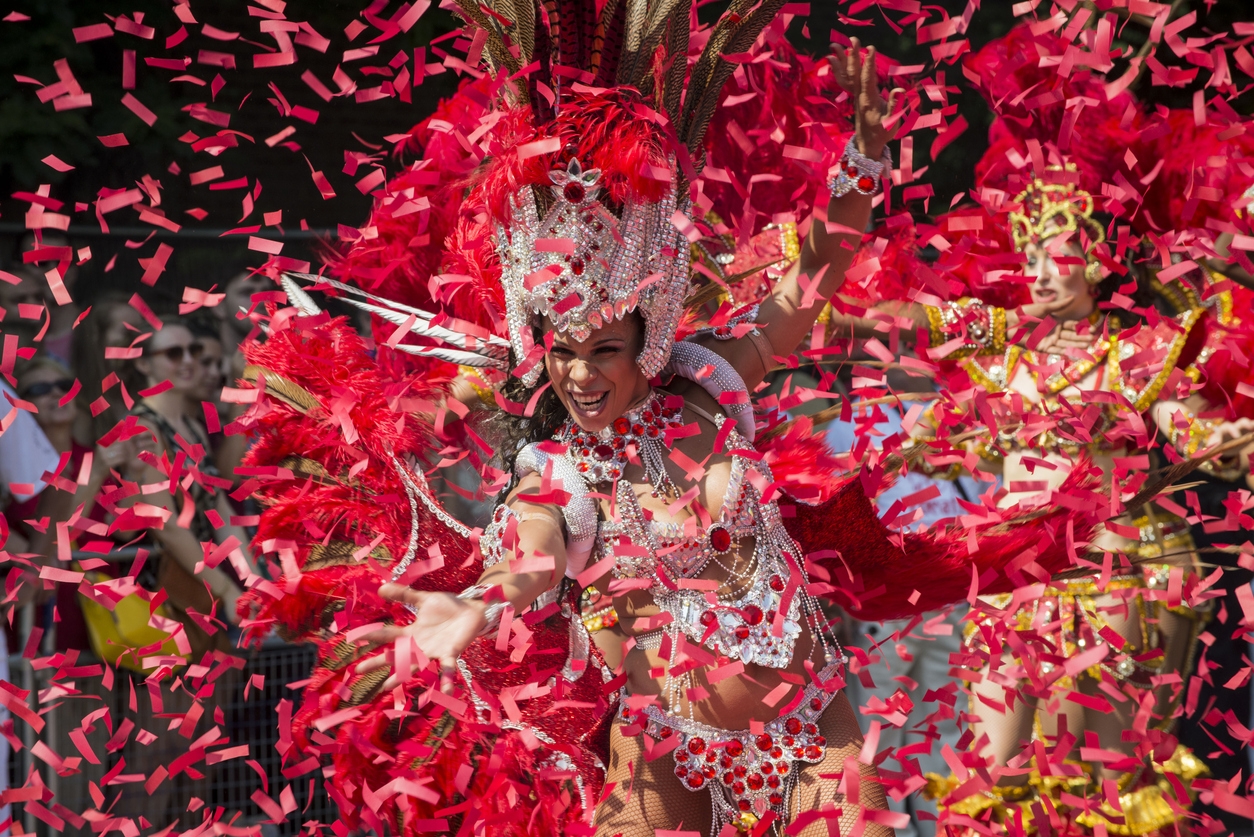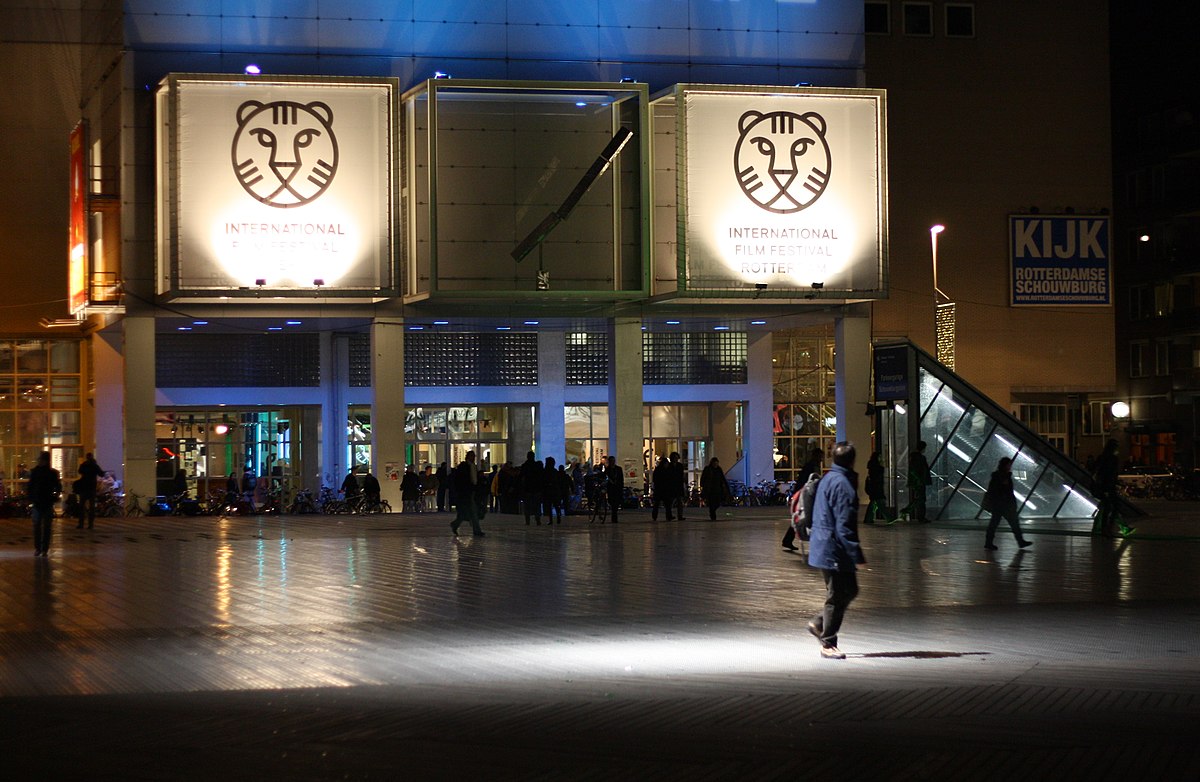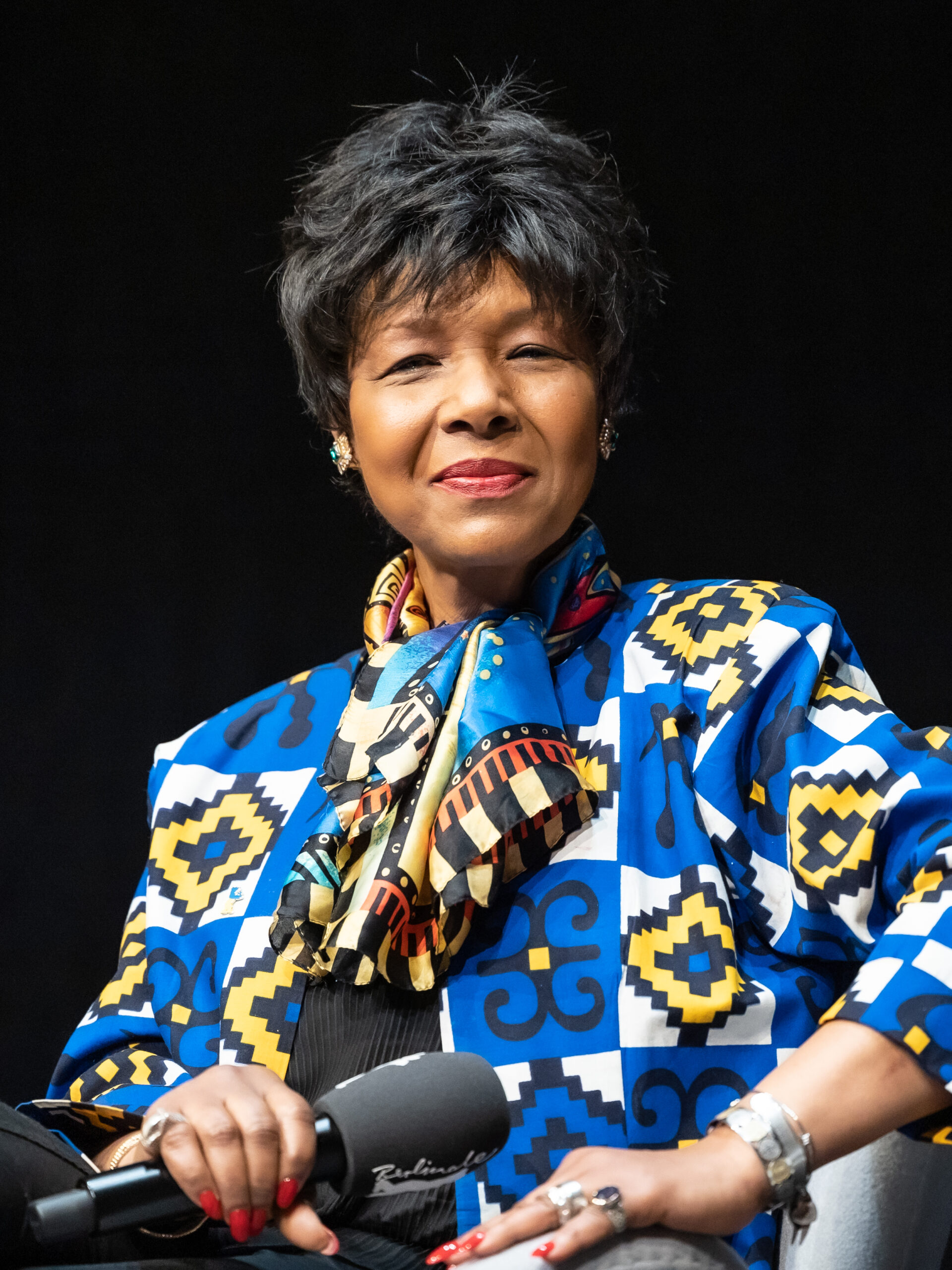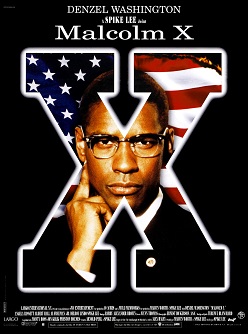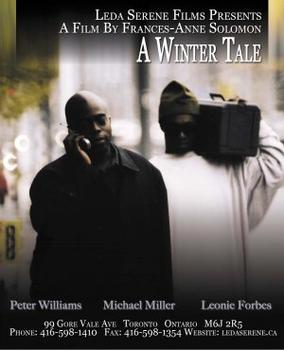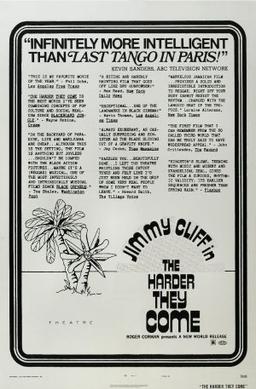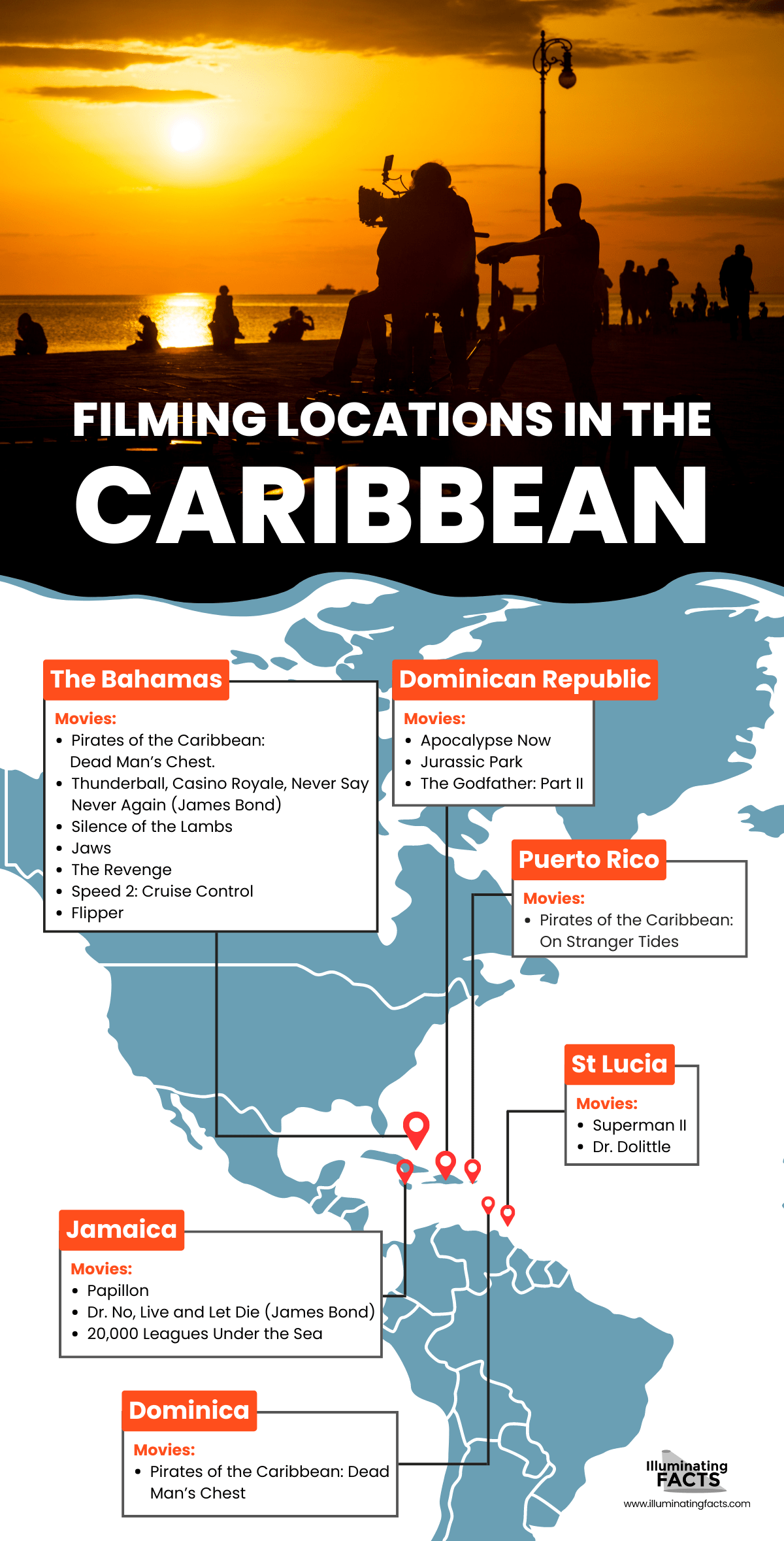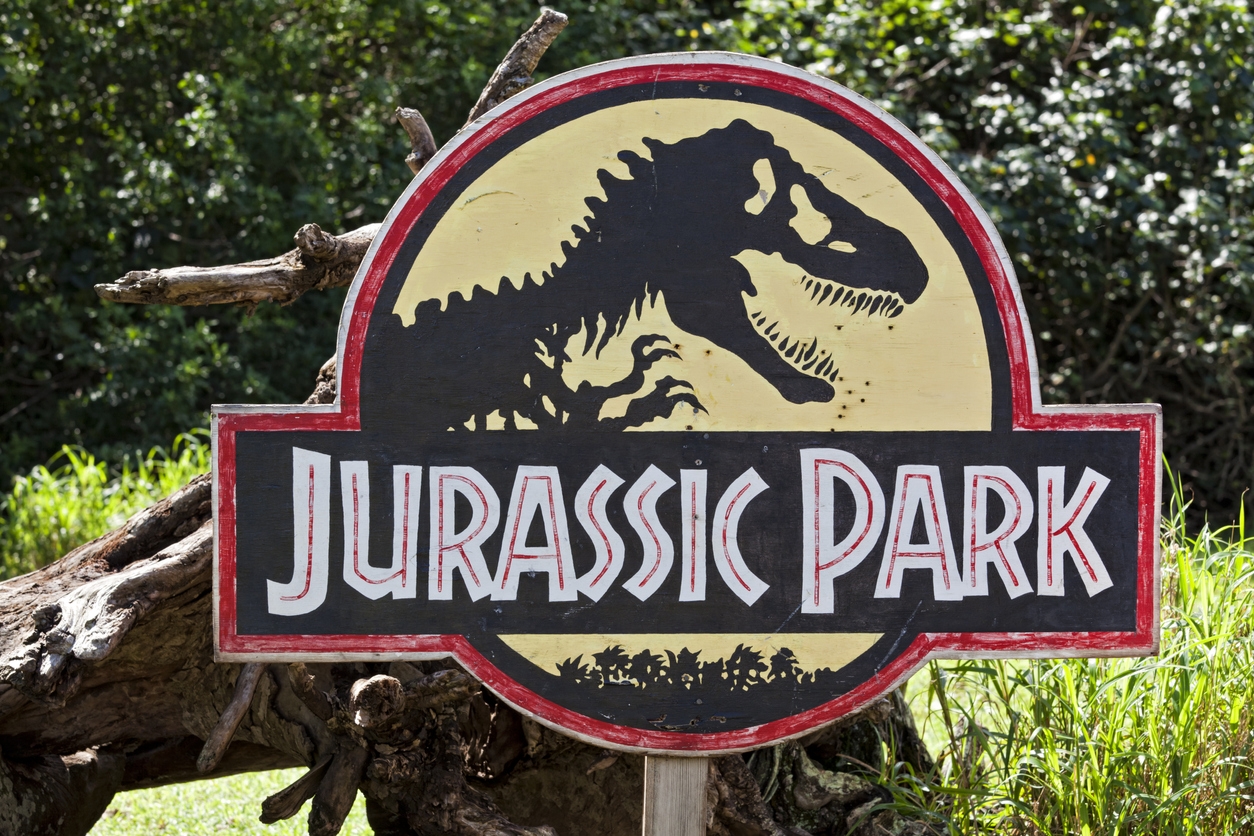The Caribbean film industry is an untapped gem, offering a rich blend of cultures, stories, and cinematic techniques. While it may not have the global reach of Hollywood or Bollywood, it holds its own unique charm. From Jamaica’s vibrant dancehall scenes to Trinidad and Tobago’s compelling narratives, the Caribbean is steadily gaining recognition for its contributions to global cinema.
Independent filmmakers are pushing boundaries, and local film festivals are attracting international attention. As streaming platforms diversify their content, Caribbean films are becoming more accessible than ever.
Brief Overview of the Caribbean Region and Its Cultural Richness
The region is culturally vibrant with each community having its own taste in music, food, and different values and festivals to celebrate, yet they are culturally rooted. The variety of languages they speak represents their colonial history as well. They can mainly speak English, French, Spanish, and Creole apart from their regional languages that are known to their communities only. Even their music has influences from African, European, and Asian music and musical instruments. Their calypso, reggae, and soca music (genre of Caribbean music that originated in Trinidad and Tobago in the late 1960s and early 1970s) impress the music enthusiast worldwide. [1]
The bleak history of slavery and freedom shared by all the communities is one reason the communities have such strong bonding. The hint of their horrendous history and their way to freedom is always highlighted in all aspects of their culture. Their history has a profound impact on various facets of their lives, from their culinary choices to the architectural styles they employ and the way they go about their daily routines. Although they have faced challenging times in the past, they maintain a positive outlook and a zest for life. Their culture is a lively tapestry, abundant with musical expressions, festive celebrations, scenic beaches, and the beauty of nature.
Early Beginnings of Caribbean Cinema
Aside from Cuba, which had its own film industry by 1959, Caribbean film sectors were largely undeveloped, even though their connection to cinema goes back to the 19th century. They mostly depended on foreign films for entertainment. Budget limitations hindered local film production until freedom movements began. These movements emphasized the importance of local storytelling, leading to the growth of Caribbean cinema.
The inaugural feature film from the Caribbean, titled “The Right and The Wrong,” was made in Trinidad in 1970 and focused on the area’s history. This was followed by the Jamaican film “Harder They Come” in 1972, which gained considerable fame. However, the enthusiasm for creating more films waned quickly due to financial constraints in the industry. Additionally, numerous filmmakers sought opportunities abroad, as the local scene wasn’t financially sustainable in the long run.
Caribbean Film Festivals
The Caribbean people are all about enjoying and savoring life and its bounties and promoting their cultures and people. To help promote their cultures and creativities, Caribbean film industries and communities organize various movie and cinema-related festivals that showcase the work of prominent filmmakers, introduce the work of talented newcomers who have the potential and are very creative, and shed light on the Caribbean cultures, people, and social issues.
These platforms also provide opportunities to film enthusiasts and creative individuals to network with international industries and represent their work to the global audience while also learning from their work. Some prominent Caribbean Film Festivals that should be visited by the Cinema industry people are Belize International Film Festival, Curacao International Film Festival Rotterdam, Trinidad, and Tobago Film Festival, Animae Caribe, and Dominican Republic Global Film Festival [3]
Belize International Film Festival
The international festival is organized every year to promote the Caribbean and Central American film industries. Belize is recognized worldwide for promoting talent and it introduces the world to stories of Caribbean islands through documentaries, short movies, and feature films. The festival further promotes 15 music videos of Belizean artists each year, thus a great opportunity for Belizean and other Caribbean Island talent to come to light.
Curaçao International Film Festival Rotterdam
Funded by International Film Festival Rotterdam, Curacao International Film Festival is organized in Curacao every year in April. From bringing to limelight the innovative movies to promoting photography through competition, the festival aims to promote young talent in the industry and exhibit the cultural talents of Curacao.
Trinidad & Tobago Film Festival
Caribbean film producers can highlight their work to international audiences in the natively organized Trinidad & Tobago film industry. This function is usually held in September and it serves as a platform to give a voice to local creatives in the field by showing their films and inviting people from the industry to network and collaborate with each other.
Other Famous Film Carnivals
Other festivals to keep tabs on are the Jamaican Film Festival, which promotes cinema, music, food, and culture of the region, Animae Caribe Animation and Digital Media which is so popular that big animation brands like Pixar, Nickelodeon, DreamWorks, and Cartoon Network organize their workshops for young animators and digital media enthusiasts. The Travelling Caribbean Film Showcase is one more festival worth experiencing; the festival travels from one region to another within the Caribbean Islands. Dominican Republic Global Film Festival is another film carnival that brings the Caribbean film industry talent to the world.
Famous Caribbean Filmmakers
Caribbean film industry, despite its limited resources and budget managed to make its mark in international film markets. But this popularity was not overnight, many talented individuals from the film and digital media industry introduced their local and diverse culture to the world through their impeccable creative work in film and documentaries. The list below highlights some prominent film maker’s names who changed the way the world sees the Caribbean Islands, their people, and their cultures.
Euzhan Palcy
A woman who won many accolades for her film “Sugar Cane Alley” in 1930 was from Martinique. Being a reader and art lover, Euzhan wanted to introduce the world to life in the colonial regime. The film won the Cesar Award in 1984 and the Silver Lion and Best Lead Actress Award in 1983 at the prestigious Venice Film Festival. Her achievement was huge considering that she was a woman from the black community who was marginalized for their color. Her other masterpiece was “A Dry White Season” which was a bold act as she made it in Soweto, undercover by risking her life. [4]
Spike Lee
Spike Lee, the man who opened doors to the black community, is known for making movies on many socio-cultural topics that were bold, controversial, and dark. With his films, he questioned the stereotypical portrayal of black people, highlighted racial discrimination, and shed light on the lives of African people in the USA. His famous work includes Summer of Sam, Bamboozled, Inside Man, Malcolm X, Clockers, 25th Hour, Mo’s Better Blues and He Got Game.
He gained fame through his comedy movie “She’s Gotta Have it” which earned him Prix de Jeunesse Award in 1989 at Cannes. [5]
Frances Anne Solomon (Trinidad & Tobago)
Born to Trinidadian parents, Frances Anne Solomon started a successful career at BBC in 1990. Her education was from Canada and the Caribbean and it has an influence on the films too. Her famous work as a drama producer includes Love is the Devil, Speak Like a Child (1998), and Study for a Portrait of Francis Bacon (1998). [6]
It was her film “A Winter Tale (2007)” that brought her many awards such as the famous Best Diaspora Film in The Paul Robeson Category in 2009. Her other work as a director includes Bideshi(1995), Peggy Su! (1997), Literature Alive (2005), What My Mother Told Me (1995), and “I is a Long Memoried Woman (1990). Her inclination to her roots can be understood from the fact that she initiated Caribbean Tales Media Group to promote and exhibit Caribbean talent. She is a feminist by heart who also establish CineFAM to promote women of color.
Perry Henzell (Jamaica)
The man who made “The Harder They Came” (1972), Perry Henzell was Jamaican and so he tried to portray life in Jamaica, mainly in the Kingston informal settlement. He introduced the world to Reggae music and the culture of the islands, piquing their interest to see for themselves the Rastafari levity whereby people would let their hair grow long and would not comb it, would prefer wearing bold colors like Block, Red, Green, and White, each symbolizing a certain aspect of life, like green, is for herbs and red for blood and also would live a basic life of natural food. His other movie, “No Place Like Home” remained unfinished due to budget limitations. [7]
Filming Locations in the Caribbean
Who is not familiar with the pristine Caribbean Sea, the luscious soft sand, and the rich rainforests with natural beauty all around? This beauty of the archipelago is what makes it a unique destination for many cinema business people who would often opt for these enchanting places for their movies. This nature galore has served as the best movie destination for many films in the past. The list below shows some famous flicks that use the architecture and picturesque landscape of the Caribbean islands to give an unforgettable cinematic experience to their audience [8]
Caribbean Island | Movie's |
The Bahamas |
|
Dominica |
|
Jamaica |
|
Dominican Republic |
|
Puerto Rico |
|
St Lucia |
|
Co-Production and Cultural Exchange
The film festivals organized within the Caribbean islands provide an opportunity for people of the island to find like-minded people to share their talent with, not only that but the directors and producers from the region have managed to bring Caribbean Cinema to global platforms. The festivals allow talented creatives to network, collaborate and expand their films and cinema career further, the example of this is the workshops that are organized by big media studios like Dreamworks and Pixar who come to explore and find the talent lucrative for their studio and businesses. Programs like Transcultura by UNESCO further take Caribbean Film Industry to international platforms like Berlinale’s European Film Market [9]
Growing Interest in Caribbean Stories and Representation
This culturally rich region often suffers due to a lack of representation in international media in terms of their real culture and people but gradually things are changing with young blood taking more interest in being authentic and representing the truth. A group of filmmakers created a film titled “Belonging” for a screening at LA Soho House aimed to acquaint viewers with Caribbean customs and communities.
One more example is of “Mada”, a film that spotlights motherhood, showing the harsh reality of the lives of Caribbean people who migrated by sea to the UK as laborers during 1948-1971. The raw and bold cinematography ensured that the culture of the Caribbean was exhibited raw and original and not toned down to make it easier for the Western people.
Another movie that tried to depict the rawness of Caribbean culture was Home (2020). The only way forward is to accept the Caribean culture as they are instead of making them more palatable to the international audience, otherwise, it is injustice to the cinema industry and cultural cohesiveness. [10]
Conclusion
Despite the island being a paradise and an ideal location for cinematography, the lack of awareness and understanding of technicalities results in much exploitation of the people. From Shawshank Redemption to Pirates of the Caribbean, many locations are used in cinema but apart from the hospitality sector, not much benefit was reaped for the local tourism industry. [11] The region is not short of talent, but budget and technology hamper the growth of the people. But fortunately, the annual film festivals organized by public or private organizations will pave the way for better cinema prospects for the people and film industry of the region.
References
[1] Bryant. (2022, July 7). Caribbean Culture: What to Know Before You Go. Celebrity Cruises. https://www.celebritycruises.com/blog/caribbean-culture
[2] The evolution of Caribbean cinema. (2023, April 5). Something Curated. https://somethingcurated.com/2023/04/05/the-evolution-of-caribbean-cinema/
[3] McLeod, S. (2017, December 12). Top film festivals in the Caribbean. Culture Trip. https://theculturetrip.com/caribbean/articles/top-film-festivals-in-the-caribbean/
[4] Euzhan Palcy from Martinique to Hollywood. (n.d.). Martinique – Best Caribbean Islands, Caribbean Tourism, Best Caribbean Destination. https://us.martinique.org/discover/euzhan-palcy-martinique-hollywood
[5] Spike Lee. (n.d.). University at Albany – State University of New York. https://www.albany.edu/writers-inst/webpages4/archives/lee_spike.html
[6] Biography. (n.d.). IMDb. https://www.imdb.com/name/nm0813331/bio/?ref_=nm_ov_bio_sm
[7] Obituary: Perry Henzell. (2006, December 4). the Guardian. https://www.theguardian.com/news/2006/dec/04/guardianobituaries.obituaries1
[8] Classic movie filming locations in the Caribbean. (2022, March 18). Top Villas. https://www.thetopvillas.com/blog/caribbean/classic-movie-filming-locations-in-the-caribbean/
[9] Https://plus.google.com/+UNESCO. (2023, February 21). UNESCO-transcultura facilitates the largest Caribbean presence at the Berlinale’s European film market. UNESCO. https://en.unesco.org/news/unesco-transcultura-facilitates-largest-caribbean-presence-berlinales-european-film-market
[10] Taylor, S. (2023, April 17). Filmmakers of Caribbean heritage address Hollywood’s lack of representation. Variety. https://variety.com/2022/biz/news/filmmakers-caribbean-hollywood-representation-1235224634/
[11] Admin. (2014, December 14). Caribbean not realising full potential of film industry. CARICOM. https://caricom.org/caribbean-not-realising-full-potential-of-film-industry/

